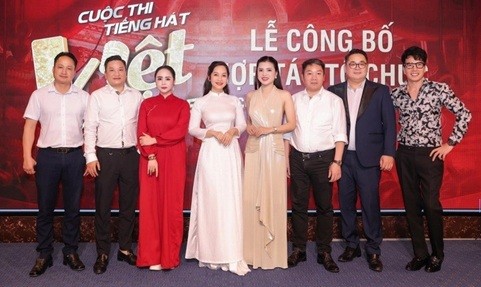Soc Trang: “Ro Bam” theatre art recognised as national intangible cultural heritage
 |
The certificate was presented to local people in a ceremony held on May 20. Photo: STO
Ro Bam is a stage art blended with theatrical dance and classical drama practised by the Khmer people of the southern region, and of Tra Vinh province in particular. It is also a combination of traditional dances, beautiful singing, elaborate costumes, and the arts of masquerade masks for artists.
Characters in a Ro Bam play are pided into two groups: the good, who don’t wear masks during the performance, and the evil, who often distinguish themselves with masks. At the end of the play, good always triumphs over evil.
Ro Bam is practiced at traditional festivals, worshipping rituals, at ceremonies celebrating the transition from rain to sunshine, and before harvest season. It is solely performed by family of Meritorious Artist Lam Thi Huong in Tai Van commune of Tran De district.
Official documents have not yet been found to trace the earliest performances of the Khmer people’s Ro Bam stage art or who the founder of the art was. However, based on the aesthetic criteria and structure of the plays, arts researchers believe that Ro Bam is a royal stage genre of Khmer people in the southern region dating from before the 20th century.
Surveys made by the Tra Vinh Provincial Museum have shown that the arts of Ro Bam in Tra Vinh province reached their peak during the 1960s, with most artists and dancers being local residents.
 |
The folk art form includes traditional dance and theatre of the Khmer people in Vietnam’s southern region. Source: NDO
According to Meritorious Artist Kim Thinh, former head of the Anh Binh Minh art troupe, the main language used in a Ro Bam performance is that of dance, and the scripts are developed based on folk tales and the Ramayana - an ancient Indian epic poem.
During its golden days, Ro Bam artists delivered their performances under torchlight on a ground space which was covered with straw.
Nowadays, stage equipment and lighting systems provide greater support for the performers in drawing audiences. Scripts have been shortened to make the performances more accessible for the audience.
However, the staging of a Ro Bam play is a time-consuming work, requiring highly trained artists and dancers and elaborate costumes. Needless to say, the number of master artists of Ro Bam has dwindled over time, raising an urgent call to preserve the treasured intangible cultural heritage.
In response to the call, Tra Vinh University launched a department on Khmer language, culture and arts in 2012, providing training programmes on the traditional practises and cultural values of the Khmer people.
This year, along with “Ro Bam” theatre art, nghinh Ong (whale worshipping) Festival in Tran De district has been acknowledged as intangible cultural heritage.
VNF
Recommended
 Viet's Home
Viet's Home
Hue City to Raise Awareness on Mine Accident Prevention
 Focus
Focus
Vietnam Leaves Imprints on the World Peacekeeping Map
 Viet's Home
Viet's Home
“Global Vietnamese Singing 2025” - Connecting Hearts Longing for Homeland
 Viet's Home
Viet's Home
Vietnam’s People's Public Security Force Actively Contributes to UN Peacekeeping Operations
Popular article
 Viet's Home
Viet's Home
HAUFO Enhances Competence of People-to-People Diplomacy Personnel
 Viet's Home
Viet's Home
Hands that Reserve Da Long Brocade Craft
 Viet's Home
Viet's Home
Da Rsal – How Digital Transformation Reshape a Poor Commune
 Viet's Home
Viet's Home



